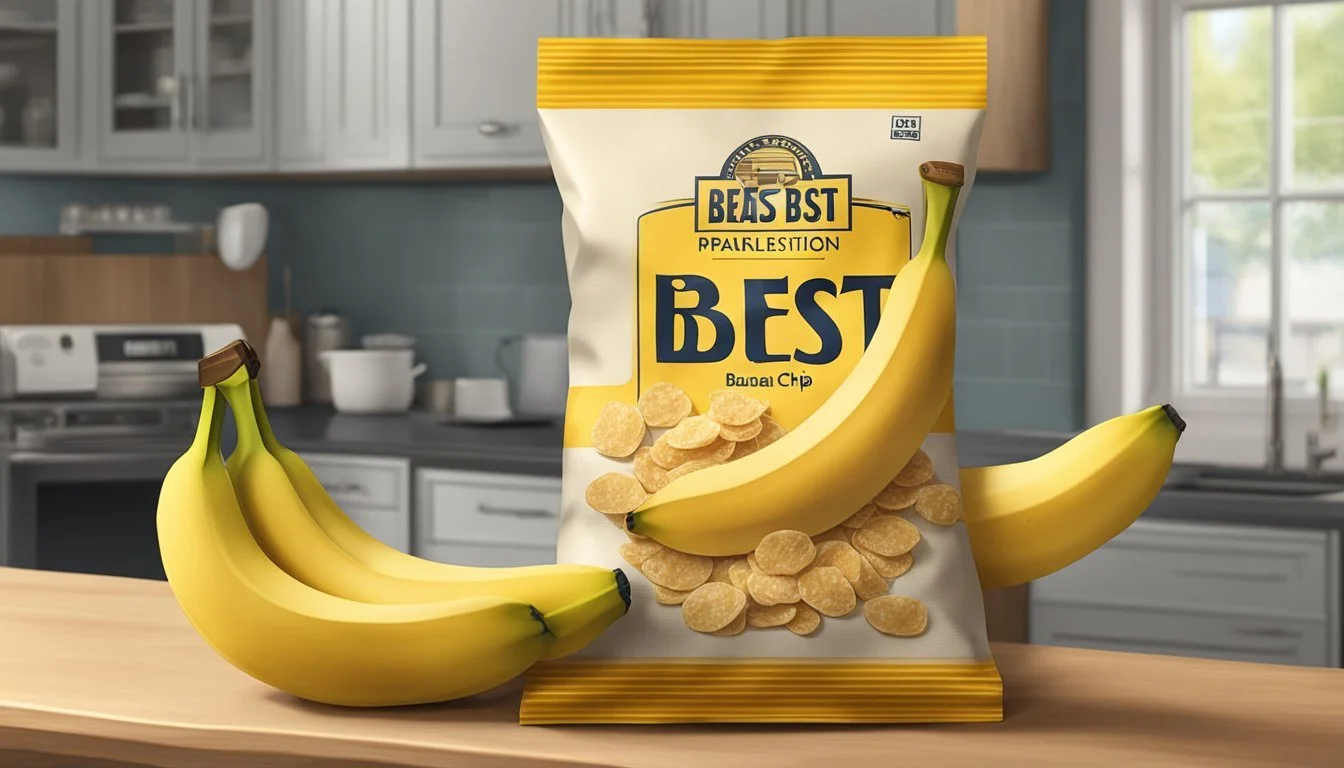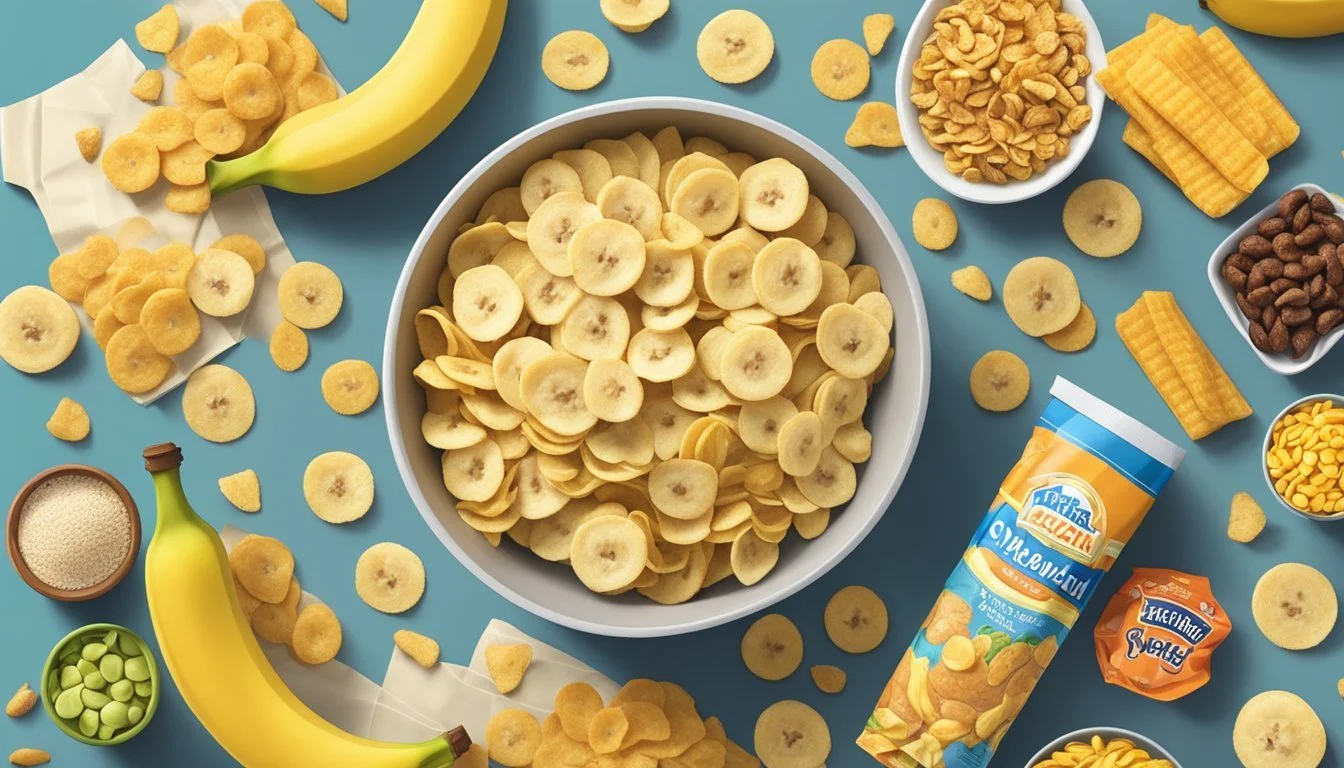How Long Do Banana Chips Last?
Shelf Life and Storage Tips
Banana chips are a popular snack recognized for their convenience, particularly for those on the go. Praised for their portability and longer shelf life compared to fresh bananas (how long do bananas last?), these snacks offer a delightful crunch and sweet flavor. Typically, banana chips can last for six to twelve months when they are stored correctly. The correct storage method involves keeping them in an airtight container or resealable bag, away from direct sunlight and significant heat sources.
While banana chips can be considered a healthier alternative to other processed snacks, it's essential to be mindful of their sugar (how long does sugar last?) content and preparation method. Homemade banana chips, for instance, provide more control over ingredients and allow for healthier choices, such as baking instead of deep-frying, which can reduce added oils and calories. Keeping an eye on the packaging date and storage conditions can help ensure that they remain a tasty and healthier snack choice.
Determining whether banana chips are still fit for consumption involves checking for changes in texture, taste, and appearance. Signs that banana chips may have gone bad include an off smell, a change in color, or a noticeable loss of crunchiness. Consuming expired banana chips may not always pose health risks but could potentially be less enjoyable due to alterations in their intended taste and texture profiles.
What Are Banana Chips?
Banana chips are a snack made from sliced bananas that are typically dried or fried. They are known for their sweet taste and crisp texture.
Ingredients and Varieties
Banana chips are made from ripe bananas. The primary ingredients include thinly sliced bananas, oil for frying, and various flavor agents like sugar, salt, lemon juice, and spices. There are several varieties of banana chips, including those that are honey-dipped, spiced with cinnamon, or coated with yogurt for extra flavor.
Sweetened: Ripe bananas, sugar, oil.
Salty: Ripe bananas, salt, oil.
Spiced: Ripe bananas, spices (cinnamon or nutmeg(how long does nutmeg last?), oil.
Nutritional Value
Banana chips provide calories and fat in varying amounts, depending on how they are prepared. They retain minerals such as potassium, magnesium, iron, and calcium, along with some fiber and protein. Vitamins present in raw bananas, like vitamins B6 and C, might degrade during the cooking process.
Calories: High due to frying process.
Fat: High in fried chips; varies with cooking method.
Fiber: Moderate.
Potassium: Retained from bananas.
Vitamins: Reduced with cooking.
Commercial Vs. Homemade
Commercial banana chips are often processed with added preservatives to extend shelf life. In contrast, homemade banana chips made using a recipe with ripe bananas may be healthier as they can be prepared with less sugar and oil. An air fryer or a dehydrator can be used for a crisp texture with less fat.
Commercial: Preservatives, uniform slices, consistent flavor.
Homemade: Customizable, potentially healthier, can be made in an air fryer or dehydrated.
Healthy Alternatives
While banana chips are a popular alternative to potato chips, their calorie and fat content can be high. Health-conscious consumers may opt for banana chips made in an air fryer for less fat or dehydrated bananas for no added fats and less processing. Variations with added spices or a yogurt coating can also offer a more nutritious snacking option.
Air Fryer Chips: Less oil, lower fat content.
Dehydrated Bananas: No added fat, more retained nutrients.
Added Spices: Flavor without extra sugar or salt.
Making Banana Chips
When making banana chips, consumers have several methods to choose from—dehydrating, baking, or frying. Each technique offers a different flavor and texture profile to the finished product.
Dehydrating Bananas
To dehydrate bananas, one does not need elaborate equipment; a simple dehydrator will suffice. Dehydrated banana slices are placed on dehydrator trays and dried at a recommended temperature of 135°F (57°C) for approximately 6-12 hours, until they are crisp. Bananas should first be peeled and then cut into uniform slices to ensure even drying. It's crucial to store the dehydrated bananas in an airtight container to maintain their freshness and extend shelf life.
Baking Banana Chips
Baking banana chips is a straightforward process involving an oven, a baking sheet, and parchment paper for a non-stick surface. Preheat the oven to around 200°F (93°C). Lay out the banana slices on the parchment-lined baking sheet without overlapping and bake for about 1-2 hours, flipping halfway through until achieving a crispy texture. Baked banana chips provide a healthier alternative to their fried counterparts.
Frying Banana Chips
For those preferring a crunchier and often more savory option, frying banana chips is the method of choice. Using a heavy-bottomed pan, slices of banana can be fried in olive oil. The frying should be done at a medium heat to avoid burning, and once the chips are golden brown, they can be removed and placed on a paper towel to absorb excess oil. A dash of salt or turmeric powder can be added for extra flavor.
Flavoring and Seasoning
Flavoring and seasoning are essential components to enhancing the taste of banana chips. Sweet variations often use sugar, both white sugar and brown sugar, and spices like cinnamon. To prepare a sweet coating, mix the sugar and cinnamon and sprinkle it over the chips before or immediately after the drying or frying process. For savory chips, integrate salt or spices to the slices prior to cooking. Remember, the key is to apply seasonings evenly for a consistent taste throughout.
Storing Banana Chips
Proper storage is imperative for maintaining the quality and extending the shelf life of banana chips. Appropriate packaging and conditions can significantly influence their freshness.
Packaging and Containers
When it comes to preserving banana chips, sealed packaging is essential. Using an airtight container or resealable bag can prevent humidity and other environmental factors from affecting the chips. For long-term storage, consumers should ensure that the packaging is not only airtight but also opaque to minimize oxidation caused by light.
Shelf Life Considerations
The shelf life of banana chips is greatly determined by the storage temperature and humidity conditions. Typically, unopened banana chips have a shelf life of up to six months. Once opened, storage life decreases to approximately 2-3 weeks. To maximize freshness, one should store the chips in a cool, dry place, away from direct sunlight. Checking the expiration date and presence of preservatives in the chips can also be informative for determining their shelf life.
Extending Freshness
To further extend the freshness of banana chips, proper conditioning is beneficial. This might include the addition of natural preservatives like citric acid found in lemons to combat oxidation. Furthermore, maintaining a consistent storage temperature and protecting the chips from fluctuations in humidity will aid in keeping them crisp and enjoyable.
Potential Spoilage Indicators
When banana chips lose their characteristic freshness, there are typical spoilage indicators to look out for. These signals can be visual or sensory, such as changes in color, smell, or taste, warning that the banana chips may be unsuitable for consumption.
Visual Signs of Spoilage
Banana chips, when spoiled, might exhibit browning or dark spots beyond the natural color one would expect from the dehydration process, indicating they have potentially gone bad. Consumers should also look for signs of mold, which can span from white fuzzy spots to greenish-black areas. The presence of such growth is a definitive marker for expired banana chips and warrants immediate disposal to prevent food poisoning.
Smell and Taste
A shift in smell can reveal spoilage; fresh banana chips typically have a sweet, mildly fruity scent. An off-putting or rancid odor suggests they are no longer safe to consume. Similarly, a taste test, although not recommended if spoilage is suspected, would reveal a stark difference from the expected sweet and crunchy experience. Any sour or unusual flavor indicates that the banana chips should not be eaten.
Creative Uses for Banana Chips
Banana chips are a versatile ingredient that can enhance the flavor and texture of various foods. Due to their crispiness and subtle sweetness, they can be included in many recipes or used as a garnish to add an interesting twist to traditional dishes.
Snack Mixes and Trail Mix
Banana chips make an excellent addition to snack mixes and trail mix. When combined with a variety of nuts (how long do nuts last?) and dried fruits (What wine goes well with dried fruits?), they contribute a tropical flavor and a satisfying crunch. To create a balanced snack mix, consider the following ingredients:
Almonds, peanuts, or cashews for a rich, nutty taste
Raisins (how long do raisins last?), dried cranberries (how long do dried cranberries last?), or other dried fruits for sweetness
A sprinkle of sea salt (how long does sea salt last?) or a dash of spice for an extra flavor kick
Baking and Desserts
In baking and desserts, banana chips can be a delightful alternative to fresh bananas or other dried fruits. They infuse baked goods with a concentrated banana essence without adding excess moisture. Here are a few ways to incorporate them into desserts:
Crushed banana chips in banana bread or muffins for a doubled banana flavor
Banana chips recipe for cookies, where they can be mixed into the dough or placed on top before baking
Adding banana chips to bakery items not only provides an additional layer of banana taste but also introduces a pleasing textural contrast.
Garnishing and Toppings
Banana chips serve as a creative garnish and topping. Their distinct shape and color can make any dish visually appealing, while their taste adds another dimension to the overall flavor profile. They are particularly effective when used in:
Yogurt or oatmeal, where they offer a crunchy contrast to the creamy texture
Salads, where they add a surprising element among the fresh ingredients
By integrating banana chips as an alternative topping or garnish, chefs and home cooks alike can elevate the presentation and taste of their dishes with minimal effort.
Frequently Asked Questions
This section addresses concerns and tips regarding the health implications, selection process, and possible substitutes for banana chips, providing essential and factual insights for discerning consumers.
Health Benefits and Concerns
Banana chips are a snack made from dehydrated or fried ripe bananas. A moderate consumption offers dietary fiber and nutrients such as potassium and iron, but they can also be high in calories and fat depending on the preparation method. It's important for consumers to check the labels for added sugars or oils that could detract from the nutritional value.
Selection and Purchase Tips
When purchasing banana chips, one should look for high-quality packaging to ensure maximum freshness and shelf life, typically ranging between 6 to 12 months. Buyers are recommended to select banana chips that are stored in airtight containers and to inspect the ingredient list for added preservatives or artificial flavors, which might affect the product's natural quality.
Alternatives to Banana Chips
Individuals seeking alternatives to banana chips might consider other dehydrated fruits like pineapple or pear. Plantain chips are a similar snack that offers variety in flavor and texture, yet maintains a comparable nutritional profile. These alternatives also provide fiber and potassium while allowing for experimentation with different tastes and potential health benefits.






